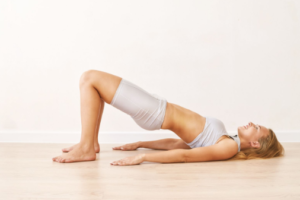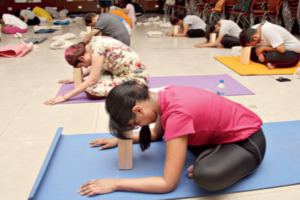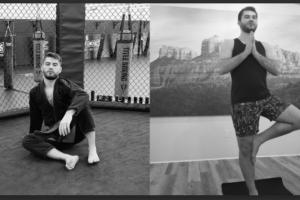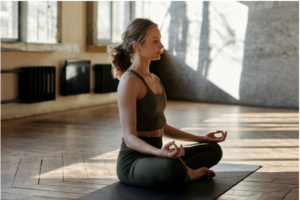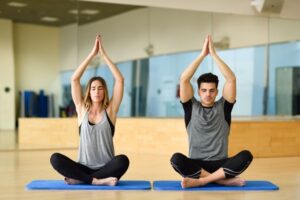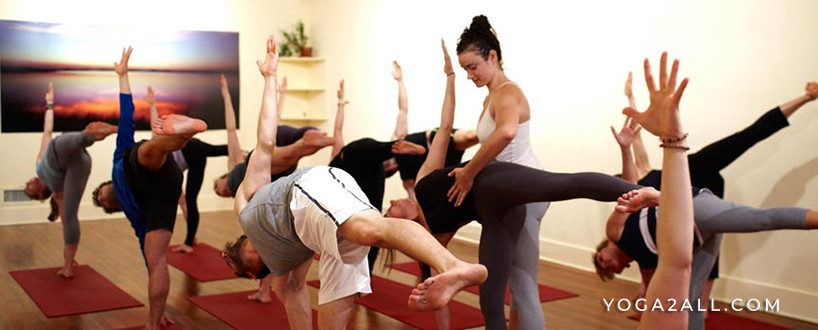
Your expertise as a yoga teacher gets tested when you are expected to teach first-time yogis. Yes, it’s absolutely true that you get the chance to know your abilities in a better way while mentoring the beginners. Still, many things must be taken into consideration when you conduct yoga classes for beginners. Remember, beginner yogis are a mix of raw energy, enthusiasm, insecurities and prejudices about everything including yoga. Try to deal with them intelligently to succeed in the purpose of yoga teaching.
These points will help you become a decent yoga teacher and helpful yoga for beginners
Yoga relies heavily on practical learning. This makes your job extremely challenging as you have to keep the class exciting about this age-old science. In order to make yourself approachable, consider the below-listed points and be sure to earn praise and respect from the students:
Keep the Language Simple: Just a few years of teaching experience is enough to garner a huge technical jargon of yoga. But, when it comes to teaching the beginners, you have to avoid ‘heavy’ terms and instead replace it with simpler wordings. Try to anchor the entire class as if you are also learning along with. This way, it would become easier for the students to connect with yoga and will help you make them understand the poses and other important things conveniently.
Bring Clarity of Concept: You know that there is a stark difference between yoga, pranayama, meditation, and yogic philosophy. This puts a beginner who is training for yoga in a challenging situation. To ease out the students, better prepare a plan of study and follow a particular sequence. You may choose to briefly discuss the background of the topic before elaborating further on the subject matter.
Focus on Anatomy and Body Awareness: In yoga, precise knowledge about anatomy is of great importance as the correctness of a yoga pose depends solely on it. In this regard, it becomes imperative to impart the best possible knowledge about anatomy in students in order to train properly. In the initial phase, just tell them to feel their own body parts while doing a particular yoga pose. This way, they will become more aware of their own bodies and will start attending yoga classes with full enthusiasm.
Always Focus on Breath: Being a teacher, when you teach yoga for beginners, you must be well aware of the roles played by breathing in the yogic learning. So, you can start teaching the students about the basic lessons on breath control. Better train them to develop the habit of rhythmic breathing in a gradual manner. Also, remember to discuss the correct way of breathing while doing yoga poses to make students understand the value of the life force.
Keep Explaining Purpose of Poses: Simply demonstrating the yoga poses is not enough to get the students excited about this ancient science. You must try to narrate the entire aspect about the asana in great detail to them. Besides, do place a particular focus on narrating the health benefits of different yoga poses in order to keep the beginners hooked through the period of learning.
Provide Regular Encouragement: It’s pretty obvious that in the beginning, you observe the students making big mistakes while doing yoga poses. First correct them immediately and give reassurance that in due course they will be able to master the techniques of yoga. Encourage them to maintain proper flexibility and gather some strength in the first hand, after that yogic journey will become smoother.
Basic yoga poses to include for teaching beginners or yoga for beginners:
Child’s Pose: Also called as Balasana, this is frequently used as a resting pose while practicing more difficult asanas.
Cat/Cow Pose: Popularly called as the Marjaryasana/Bitilasana, this pose is considered a good exercise to warm up the spine. It is a breath-synchronized asana that usually flows from the Cow Tilt to Cat Stretch. You must recommend this asana for improving the overall state of mind, body, and spirit.
Mountain Pose: Regarded as the foundation of all the standing poses, the Mountain Pose must be taught in the very beginning of the yoga lessons. By helping the students master this pose, you can greatly improve their posture for doing other poses correctly.
The Warrior Series: By teaching the interesting series of Warrior Pose, you will be able to develop a firm foundation for balance during yoga practices. Be it the squared hips or the wide stances, this series can definitely prove beneficial in the initial phase of the training.
Tree or Eagle Pose: In order to improve the overall stability and maintain a correct posture, you must recommend the Eagle Pose. Enhancing the strength of thighs, hips, shoulders, upper back, ankle and calves, this could be a good position for the beginners to develop stability and balance.
Savasana: At the end of each session, you must not forget to give the students some time to restore their body and mind in the Savasana.
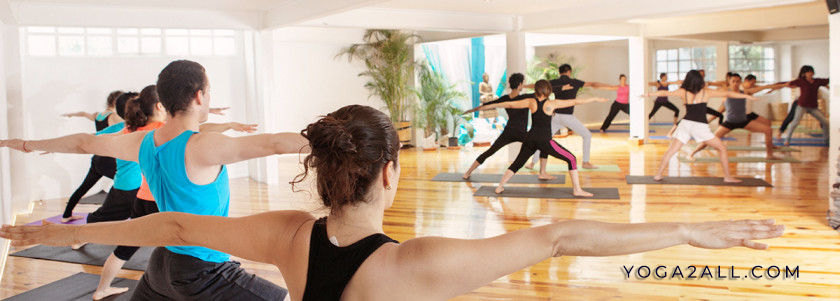
As a teacher, every class you take will be ripe with immense possibilities. It’s also true that you will be able to discover new learning skills of the students. However, to become the real source of inspiration for the beginners, you must remember to develop your own distinct style. And, just try to be receptive regarding inputs and show flexibility to create a congenial atmosphere of learning yoga.


